(English below)
Les invito a visitar este hermoso edificio patrimonial, que es poco conocido por lo reciente de su remodelación y por estar un poco al margen del circuito turístico del centro histórico. El caché no está en el edificio, está cruzando la calle, pero vale la pena entrar. El ingreso es gratuito y al interior hay diversas exposiciones y servicios.
Recomiendo muchísimo visitar la web https://palaciopereira.cl/historia/ para conocer más sobre la historia del lugar. Acá les dejo un resumen de la misma:
En 1872, el senador Luis Pereira Cotapos encarga la proyección de su residencia particular, el Palacio Pereira, al arquitecto francés Lucien Ambroise Henault, quien es parte de los contactos del Estado para construir la nueva arquitectura de la República. El palacio muestra una innovación tipológica en el patio, dando cuenta de la transición entre el sistema consecutivo de patios de los solares coloniales y los denominados «palacios» que comienzan a construirse al norte de la Alameda en la segunda mitad del siglo XIX. En 1874 se termina de construir el Palacio Pereira, aunque en rigor el edificio sigue experimentando transformaciones por décadas.
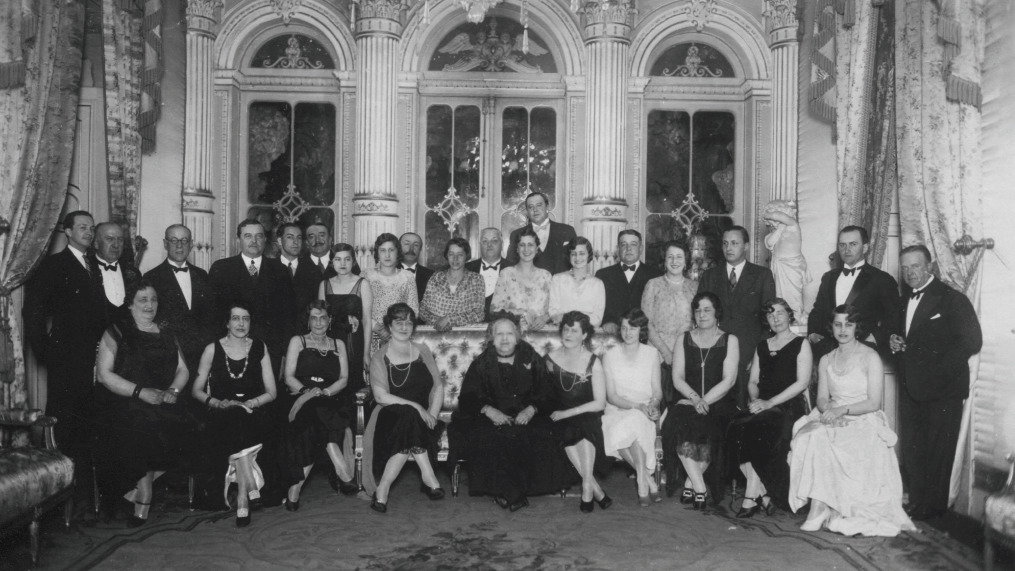
En 1932 el Palacio deja de ser la residencia de la familia Pereira y posteriormente tiene variados usos, entre ellos oficina del Arzobispado de Santiago y de la Caja de Ahorros de Empleados Públicos. Entre 1960 y 1968 funciona el externado del Liceo Nº 3 de Niñas Mercedes Marín del Solar en el lugar. Luego es sede del Liceo Nº26 Centro Humanístico Santiago Centro y casa de distintas federaciones de estudiantes. Tras el golpe de Estado, el Palacio es allanado por militares en búsqueda de armas. Sus dependencias habían servido como lugar de reunión para federaciones e individuos ligados al Movimiento de Izquierda Revolucionaria (MIR).
En 1981, luego de múltiples gestiones, el edificio es declarado Monumento Histórico (Decreto Nº 5746). Sin embargho, Muchos de los atributos que merecieron su protección ya se habían deteriorado, vulnerado o incluso desaparecido.
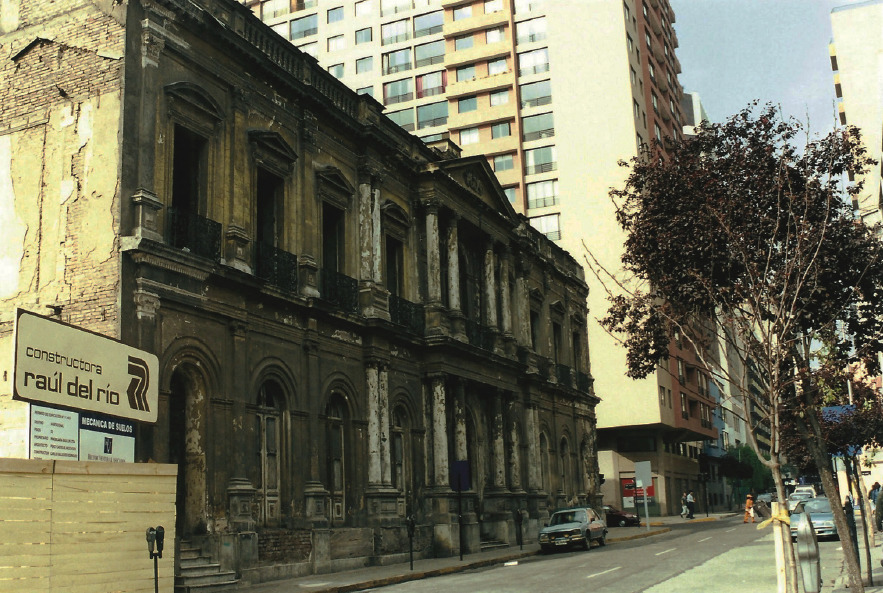
Posteriormente, diversos proyectos privados y públicos buscaron recuperar el inmueble, pero durante décadas ninguno tuvo éxito, mientras se intensificaba el deterioro del edificio, incluyendo daños sufridos en el terremoto de 2010. En 2011, el Estado compra el Palacio con el objetivo de convertirlo en sede del Consejo de Monumentos Nacionales (CMN) y de la ex Dirección de Bibliotecas, Archivos y Museos (DIBAM).

En 2012, el nuevo Servicio Nacional del Patrimonio Cultural financia y desarrolla un concurso internacional para llevar a cabo la restauración del Palacio Pereira y añadir un edificio nuevo que interprete la tipología original del monumento. El ganador fue el proyecto “El arte de la negociación: La recuperación del Palacio Pereira”, de los arquitectos Cecilia Puga, Paula Velasco y Alberto Moletto, acompañados por el arquitecto Fernando Pérez Oyarzun y el británico, especialista en conservación, Alan Chandler. La propuesta propone reconciliar dos posiciones potencialmente antagónicas, la conservación y renovación del edificio.
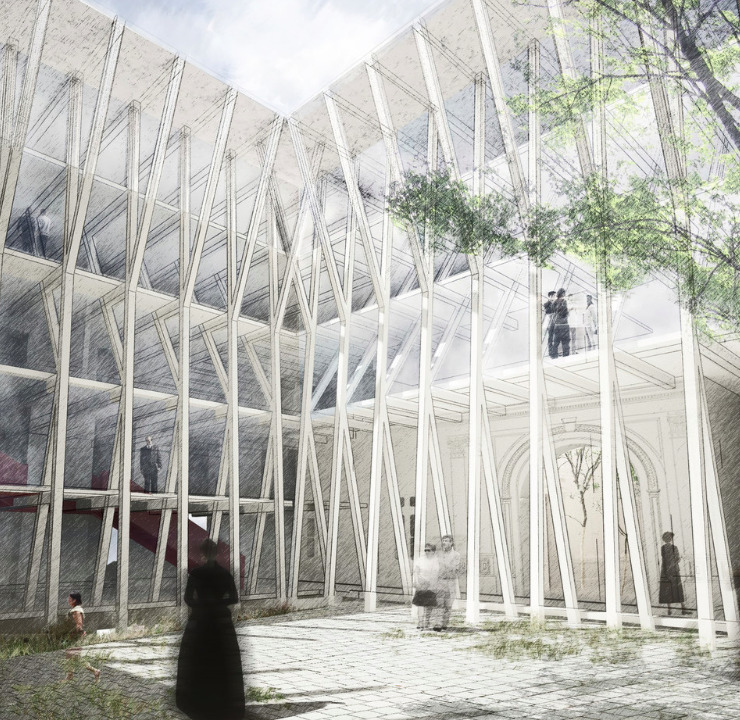
En 2016, se inicia la recuperación, consolidación y reparación estructural del edificio. El objetivo fue restaurar y consolidar los dos pisos originales del Palacio y realizar intervenciones que dialoguen con el inmueble original: un edificio de hormigón de 6 pisos (2 de ellos subterráneos) para oficinas, un patio a cielo abierto y un auditorio. Más de 40 restauradores trabajan para la limpieza y restauración de la fachada y muros interiores del edificio, hasta llegar a los tonos originales. Además se forman talleres de albañiles, carpinteros, yeseros y estucadores. En total, más de 200 personas participan de la obra.
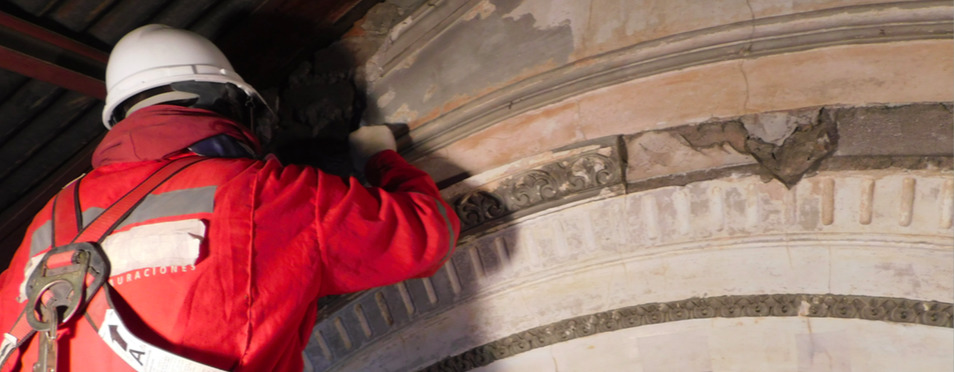
El edificio que se abre a la comunidad cuenta con salas de exhibición, Centro de Documentación del Consejo de Monumentos Nacionales, cafetería, auditorio, patio y sala de lectura de uso público. La nueva construcción de 4.675 m2 acoge las oficinas de la institucionalidad patrimonial del Ministerio de las Culturas, las Artes y el Patrimonio; la Subsecretaría del Patrimonio Cultural, el Servicio Nacional del Patrimonio y el Consejo de Monumentos Nacionales. En 2021, el Palacio Pereira fue escogido como la sede para el funcionamiento regular de las comisiones y servicios de la Convención Constituyente, cuyo mandato era discutir y presentar un nuevo texto constitucional para Chile. Luego del fracaso del proyecto constitucional, el Palacio volvió a ser designado como sede para el Consejo Constitucional, organismo electo en 2023 para desarrollar una segunda propuesta de Nueva Constitución.
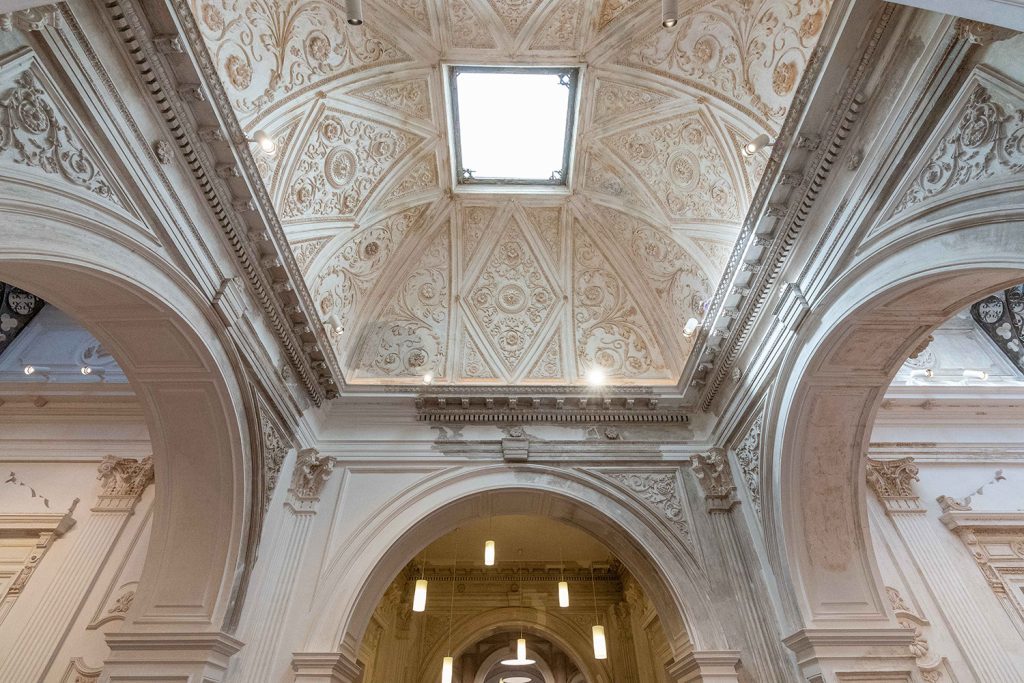
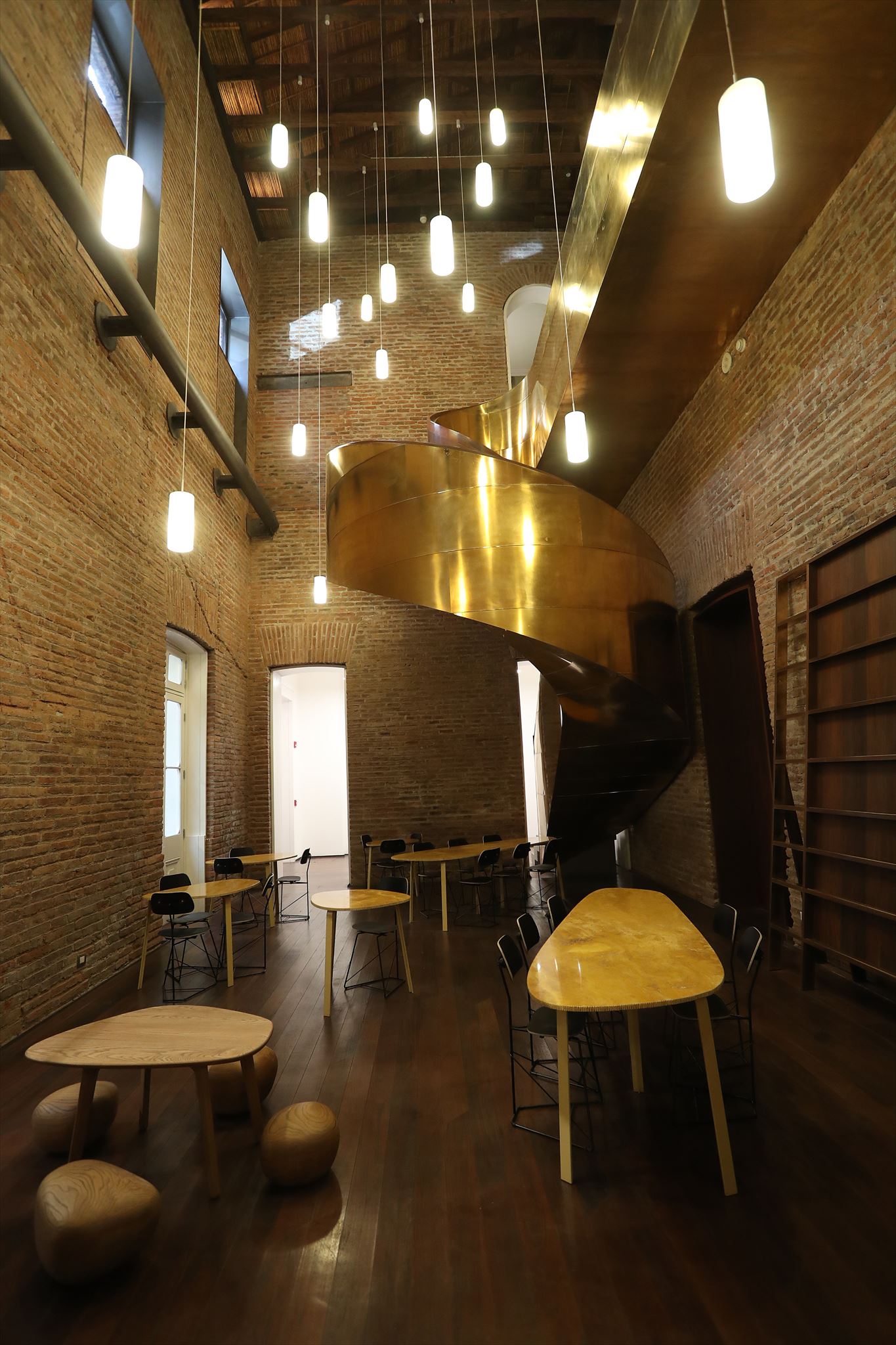
Acá pueden ver un breve video sobre la historia del Palacio.
English:
I invite you to visit this beautiful heritage building, which is little known due to its recent renovation and because it is located slightly off the tourist circuit of the historic center. The cache is not in the building, it's accross the street, but it is worth entering. Admission is free and inside there are various exhibitions and services.
I highly recommend visiting the website https://palaciopereira.cl/historia/ to learn more about the history of the place. Here is a summary of it:
In 1872, Senator Luis Pereira Cotapos commissioned the design of his private residence, the Pereira Palace, to the French architect Lucien Ambroise Henault, who was part of the State's contacts to build the new architecture of the Republic. The palace shows a typological innovation in the patio, reflecting the transition between the consecutive system of patios of the colonial plots and the so-called "palaces" that began to be built north of the Alameda in the second half of the 19th century. In 1874 the construction of the Pereira Palace was completed, although strictly speaking the building continued to undergo transformations for decades.
In 1932 the Palace ceased to be the residence of the Pereira family and subsequently had various uses, including the office of the Archbishopric of Santiago and the Public Employees Savings Bank. Between 1960 and 1968, the Mercedes Marín del Solar Girls' High School operated there. Later it is the headquarters of Liceo Nº26 Centro Humanístico Santiago Centro and home to different student federations. After the coup d'état, the Palace is raided by the military in search of weapons. Its premises had served as a meeting place for federations and individuals linked to the Revolutionary Left Movement (MIR).
In 1981, after multiple efforts, the building was declared a Historical Monument (Decree No. 5746). However, many of the attributes that deserved their protection had already deteriorated or even disappeared.
Subsequently, various private and public projects sought to recover the property, but for decades none were successful, while the deterioration of the building intensified, including damage suffered in the 2010 earthquake. In 2011, the State purchased the Palace with the aim of converting it into headquarters of the Council of National Monuments (CMN) and the former Directorate of Libraries, Archives and Museums (DIBAM).
In 2012, the new National Cultural Heritage Service finances and develops an international competition to carry out the restoration of the Pereira Palace and add a new building that interprets the original typology of the monument. The winner was the project “The art of negotiation: The recovery of the Pereira Palace”, by the architects Cecilia Puga, Paula Velasco and Alberto Moletto, accompanied by the architect Fernando Pérez Oyarzun and the British conservation specialist, Alan Chandler. The proposal seeks to reconcile two potentially antagonistic positions: the conservation and renovation of the building.
In 2016, the recovery, consolidation and structural repair of the building began. The objective was to restore and consolidate the two original floors of the Palace and carry out interventions that dialogue with the original building: a 6-story concrete building (2 of them underground) for offices, an open-air patio and an auditorium. More than 40 restorers work to clean and restore the façade and interior walls of the building, until they reach the original tones. In addition, workshops for bricklayers, carpenters, plasterers and stuccoers are formed. In total, more than 200 people participate in the work.
The building that opens to the community has exhibition rooms, the Documentation Center of the National Monuments Council, a cafeteria, auditorium, patio and reading room for public use. The new 4,675 m2 construction houses the offices of the heritage institutions of the Ministry of Cultures, Arts and Heritage; the Undersecretary of Cultural Heritage, the National Heritage Service and the Council of National Monuments. In 2021, the Pereira Palace was chosen as the headquarters for the regular operation of the commissions and services of the Constituent Convention, whose mandate was to discuss and present a new constitutional text for Chile. After the failure of the constitutional project, the Palace was again designated as the headquarters for the Constitutional Council, a body elected in 2023 to develop a second proposal for a New Constitution.
Here you can see a short video about the history of the Palace.